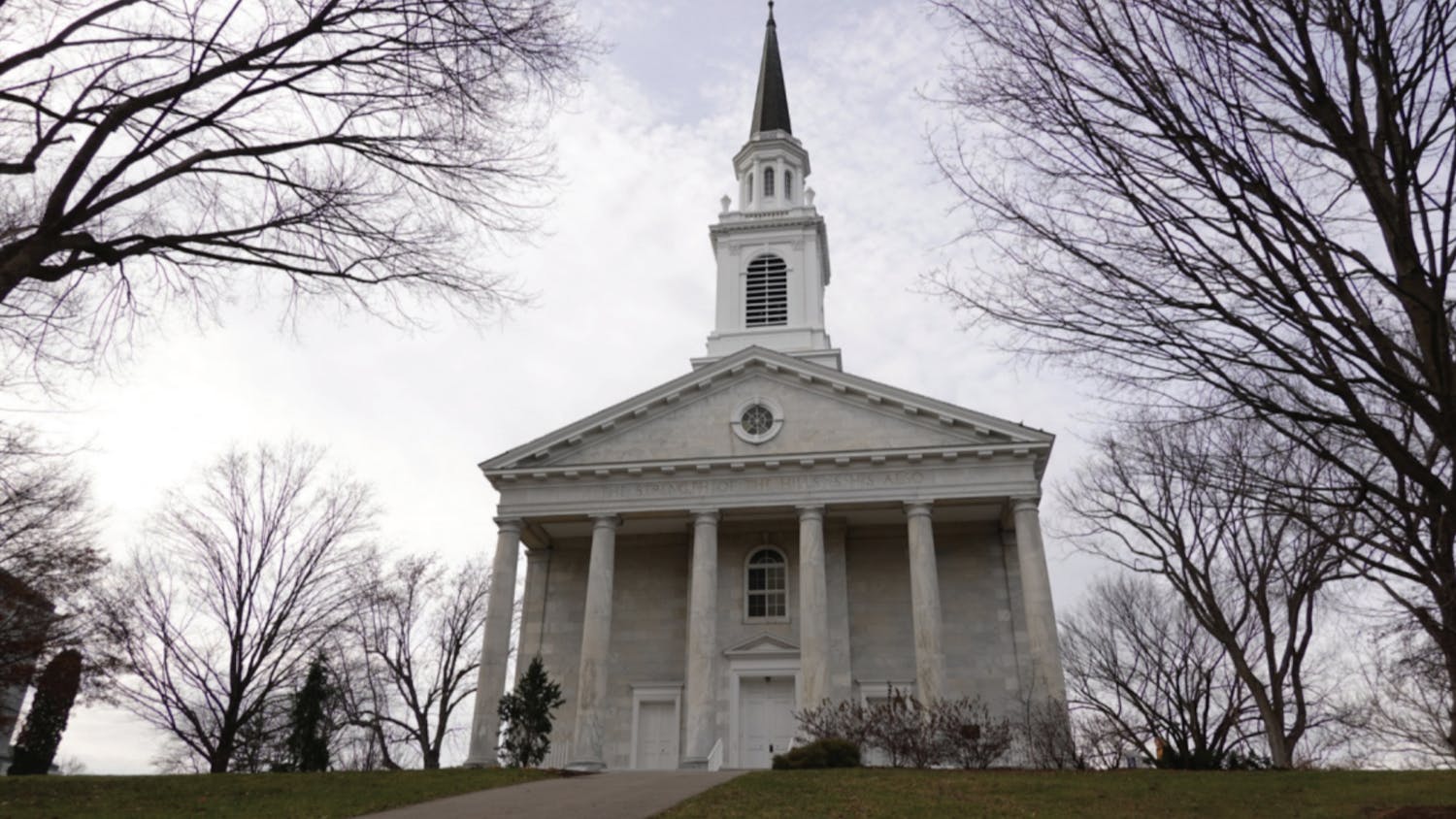The purpose a building serves is generally quite clear from the moment one enters it. The vacuum-sealed doors and laboratories of Bi-Hall denote science education, the gyms and courts in the Athletic center indicate the activities housed therein and so forth. However, the layout and contents of a building often communicate subtle aspects of the institutions they represent, values, objectives or ideologies that rest just beneath the surface.
When one enters Middlebury College’s Davis Family Library desks, library stacks, the circulation desk and other familiar paraphernalia confirm the purpose and identity of the building. To the right, next to a descending set of stairs stands a row of glass display cases exhibiting articles from the Library’s Special Collections. Currently, a collection of Tibetan and Nepalese Buddhist texts are on view, with one or two manuscripts occupying each of the display’s seven cases. An interesting display, certainly worth checking out. But what can something seemingly benign such as this reveal about underlying institutional ideologies?
The Special Collections exhibition space immediately suggests to the library-goer a specific type of academic work: close consideration of primary materials, likely performed with white gloves and a face-mask, work that is site-specific to the building housing those materials. Anybody familiar with Middlebury students’ study habits in general, and particularly in the Library, would quickly tell you that most student work looks nothing like that. Rather, the majority of assignments revolve around the use of a computer, either to type up a semester’s worth of journal entries or to find a summary of the reading, most of which simply require wifi.
In his brief essay, “The Function of the Museum,” Daniel Burin explains how museums, through various mechanisms, present themselves as guardians of certain aspects of culture. Through their collections and exhibitions of art they simultaneously create and embody “the concept of the cultural location.” The presentation of articles from the Library’s Special Collections communicates the Library’s cultural significance to the visitor, as well as the building’s scholarly purposes. Indeed, the very name “Special Collections,” which is displayed repeatedly above and around the displays, suggests advanced levels of study and “guarantees historical and psychological weight” (Burin again) of the items collected therein. By placing artifacts from this vaunted subsection of the library’s contents so prominently, the institution suggests the great heights of scholarship that might one day be accessible to the hard-working Middlebury student.
These general implications of the Special Collections display are reinforced by the current exhibition of Buddhist texts. They are beautiful documents, weathered by age and use, but the colors and writing are still clear. However, a discerning eye will find a few oddities in their presentation. Most glaringly, the placards above each case state the dates of the exhibition as “October 15 - December 19, 2014.” As of this issue, Jan. 22, 2015, the texts were still on display. Furthermore, only two of the seven placards divulge the dates of their respective cases’ contents, and those two provide the years in which the authors’ lived, not the year when the text itself was created.
These presentational ambiguities expose aspects of the institution’s relationship with, and expectations of, its audience. The extension of the show’s run is not announced anywhere in sight, and there is the strong impression that the organizers of Special Collections simply have not gotten around to changing the displays. This lack of urgency speaks to a crucial, distinctive feature of this particular exhibit and the space in general: these items are not for sale, and the space is not commercial. As a result, the space is not subject to the market pressures that influence the presentation of salable work. To pursue this line of thinking further, the non-commercial attitude here described reinforces the idea of the library as a vanguard of strict scholarship, independent of crass ideologies like “the market” or “scheduling.” In this light, the casualty of punctuality takes on an almost endearing whimsy appropriate to the study of musty old documents.
The lack of specific dating communicates another aspect of the assumed relationship between exhibition and viewer: that the audience will be comprised of novices, opposed to seasoned Buddhism scholars. One placard says of its contents, “This manuscript is displayed horizontally to fit this case, but is read vertically.” In other words, “Nobody’s actually going to read this.” Aesthetic convenience plainly takes precedent over functionality.
This is not to say the exhibit is expressed in terms entirely devoid of intellectual or academic pursuit. Although the presentation is geared toward the individual uneducated in the subject matter, the audience’s general level of information is taken for granted. For instance, there is no map showing the locations of Tibet and Nepal, nor is there an explanation of Buddhism. It is assumed, therefore, that the audience has a background of information regarding these places and topics. This assumption and the provision of new and exciting, but not overly challenging, supplementary information reflects the library’s aims as an institution. It stands as a vanguard of knowledge accessible to those with the education and other means necessary to engage this section of high culture.
The Special Collections exhibition at the Davis Library functions as a kind of testament not only to the wealth of scholarship housed within the building, but also to the enormous gains that may be made by the individual willing to invest themselves in the library, and in the institution of Middlebury College. It is an advertisement for membership in the intellectual elite and the spoils to once you’re in the club. Ancient Buddhist texts aren’t your thing? Don’t worry, the Bloomberg Portal is just a few steps further. With things like the rebranding of Middlebury’s crest and the renaming of the Monterey Institute (which, if you’re judging by email volumes, seems to “matter”) happening around/to us, it is important to be cognizant of the myriad ideologies packed into every inch of our College’s self-presentation.



